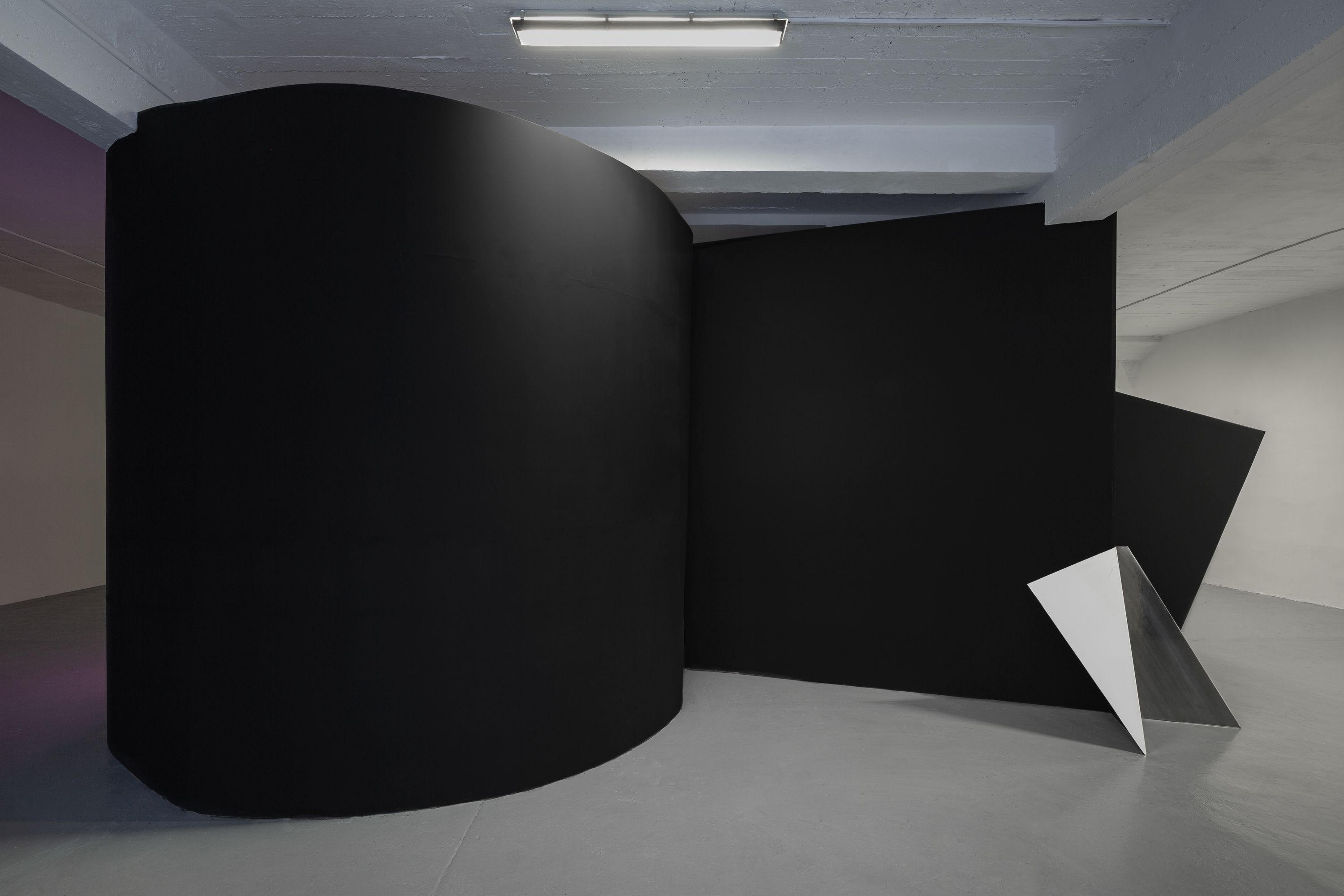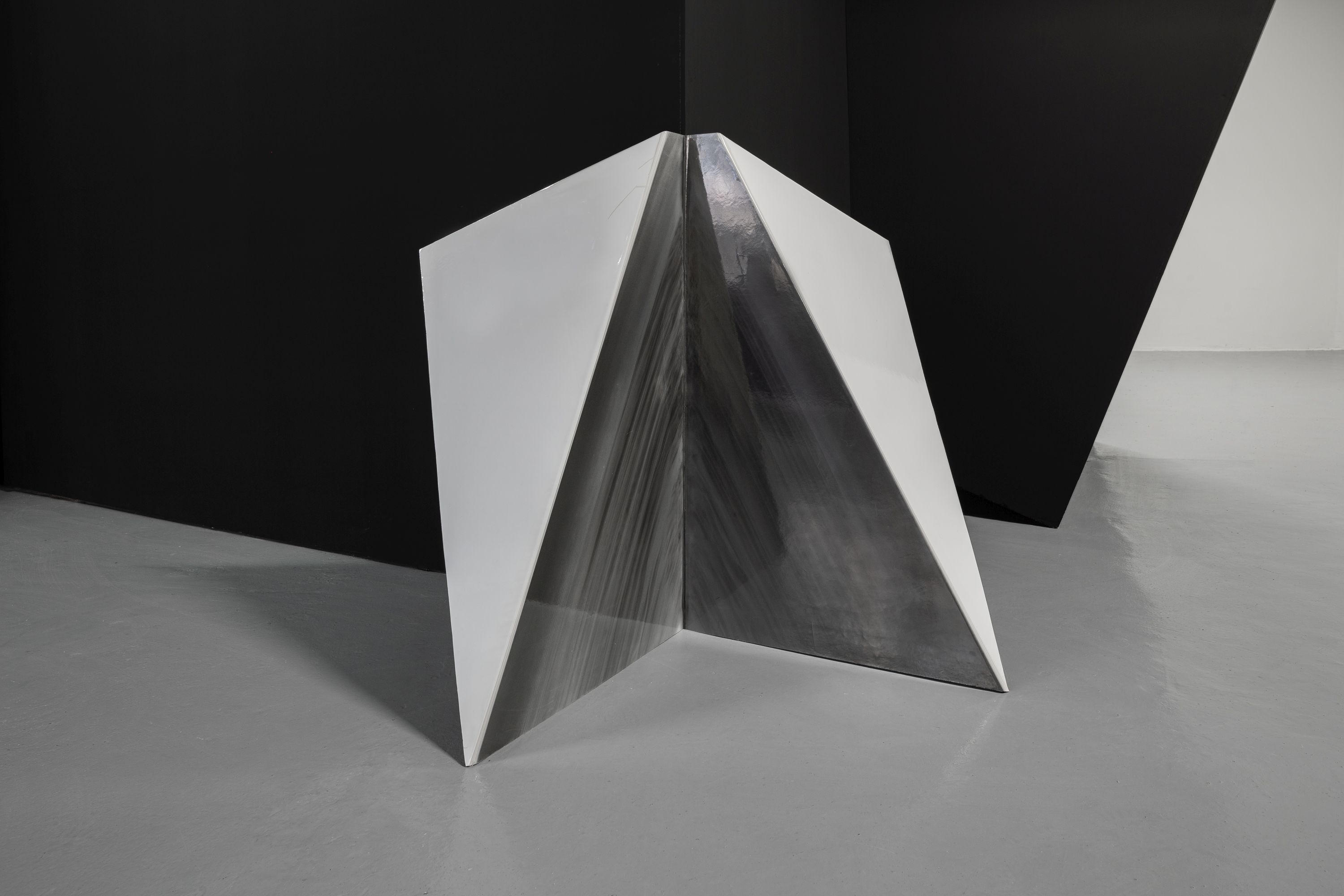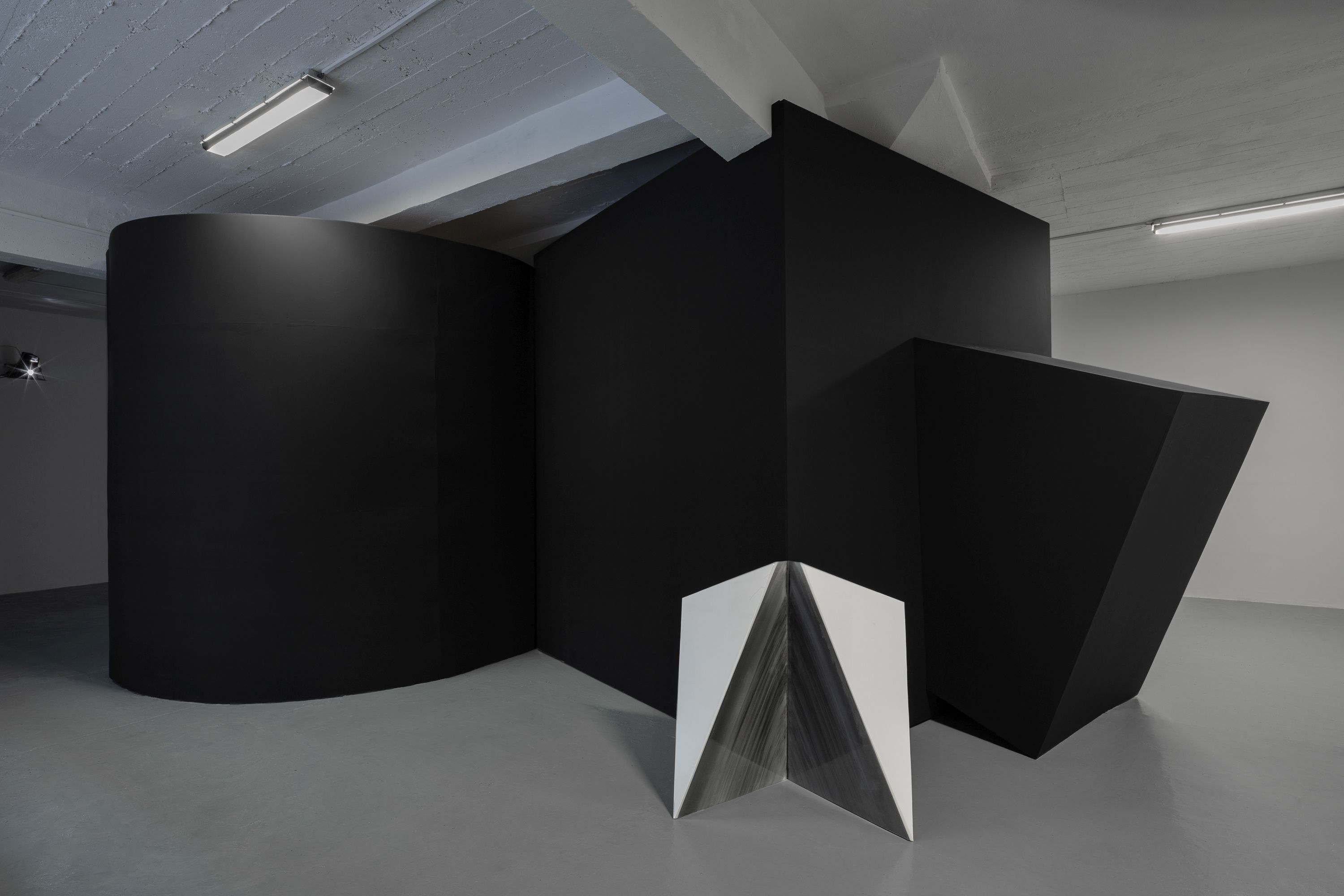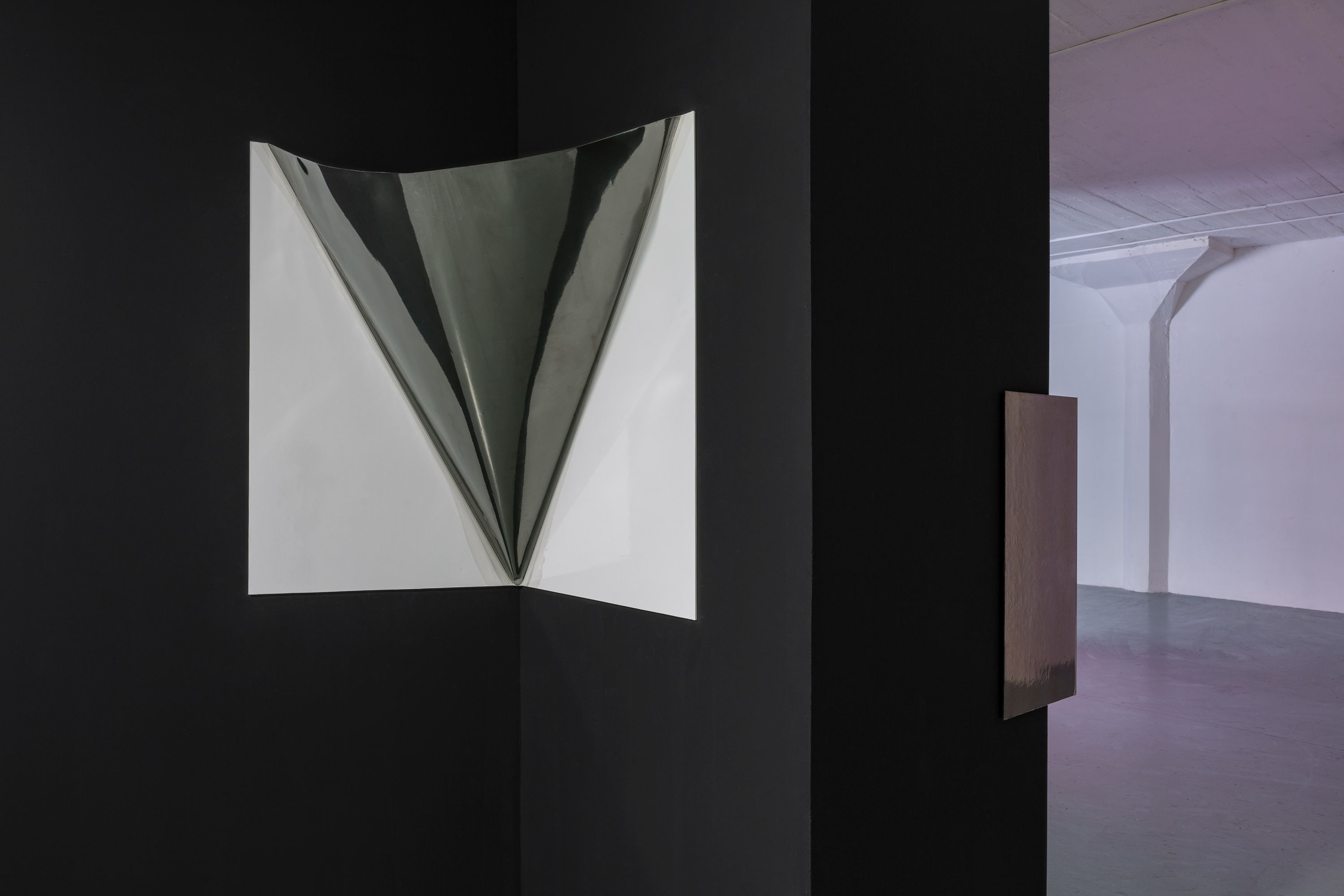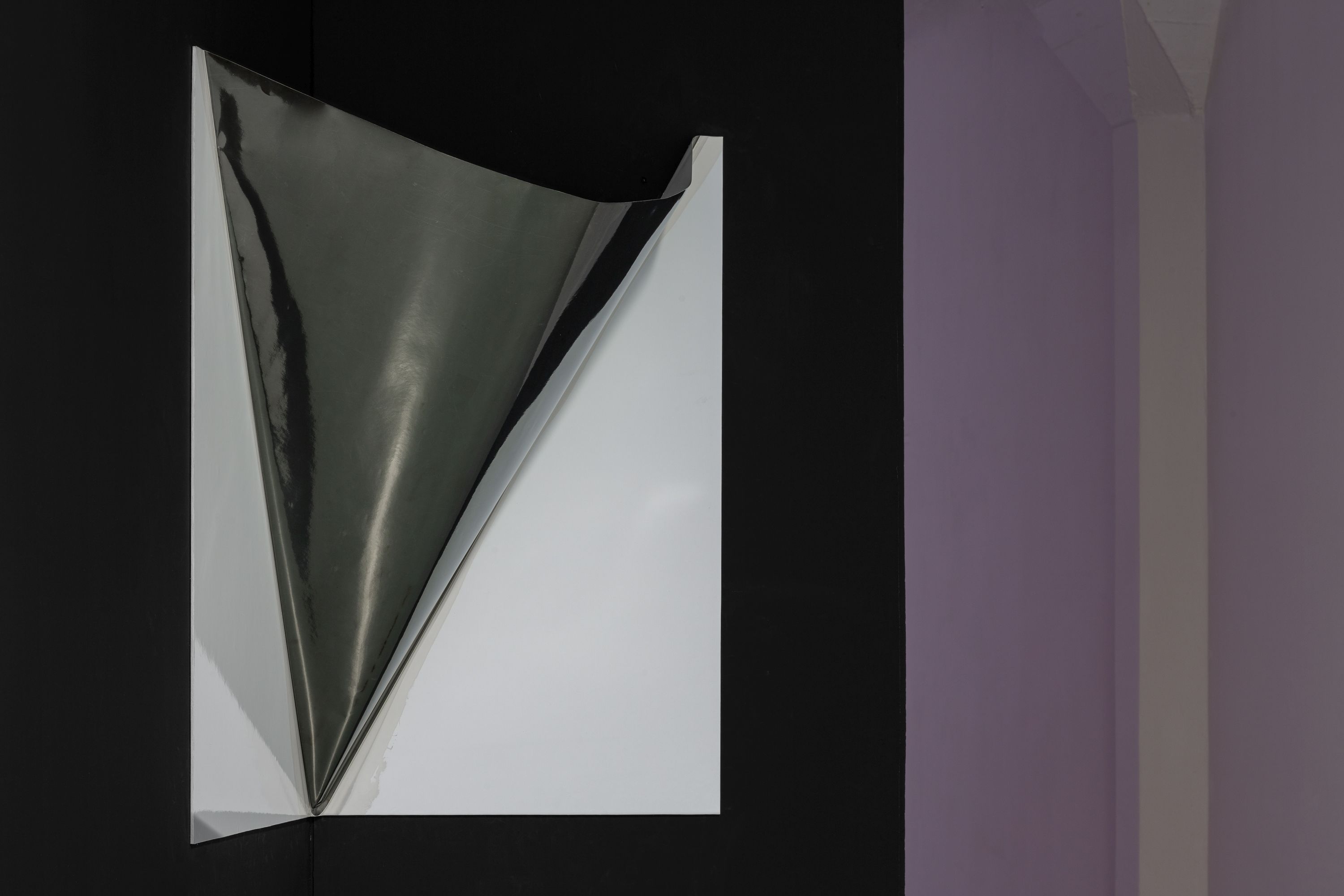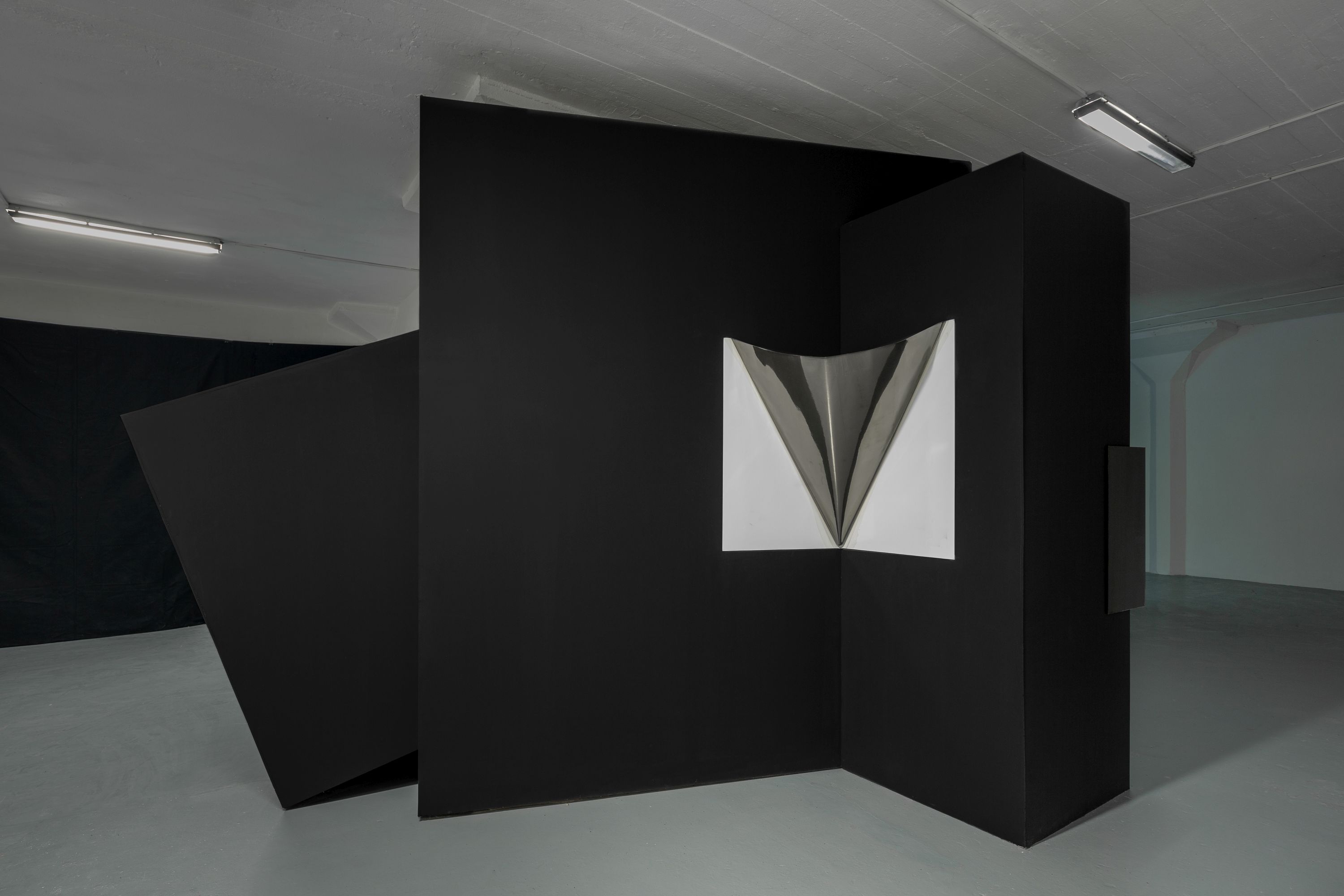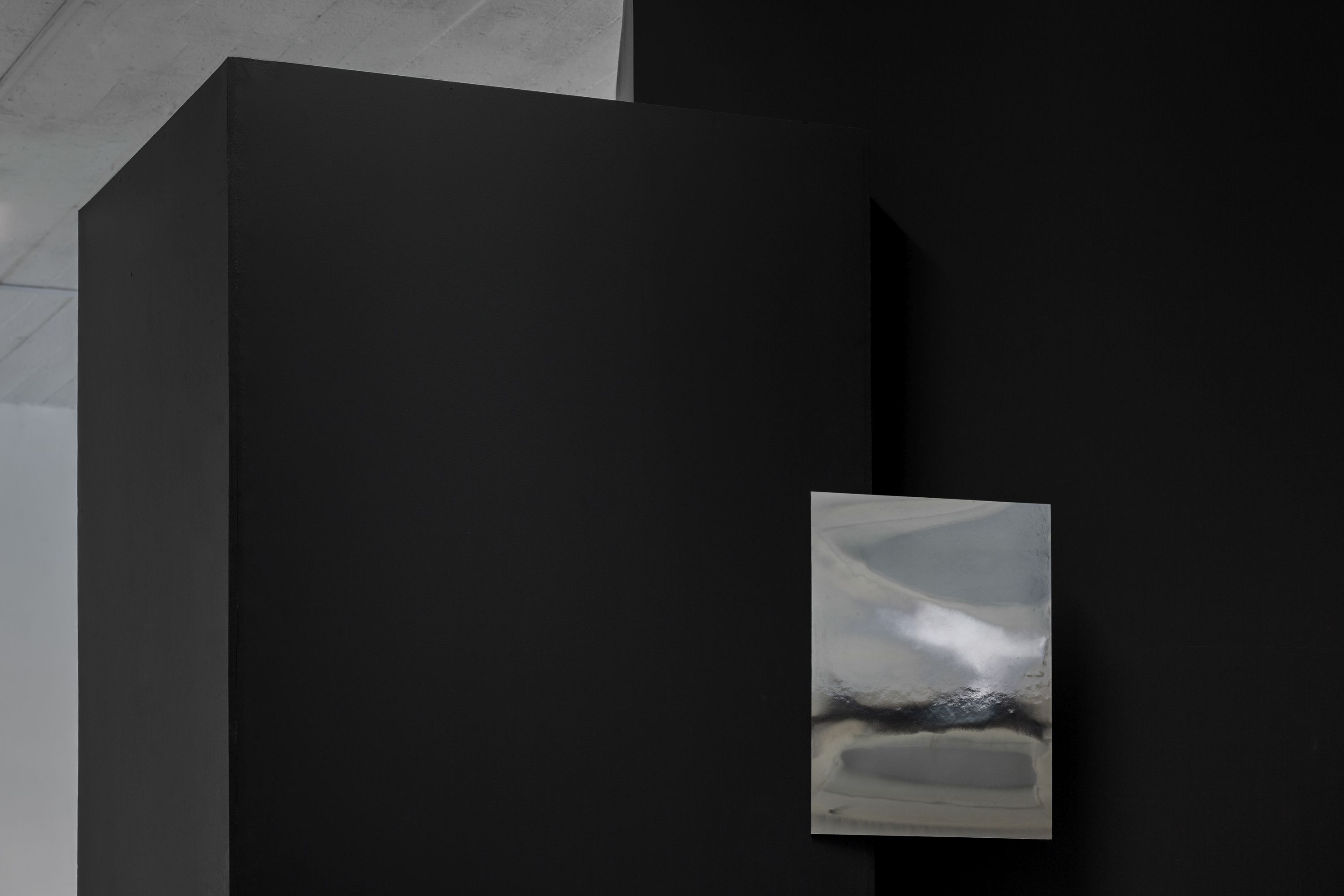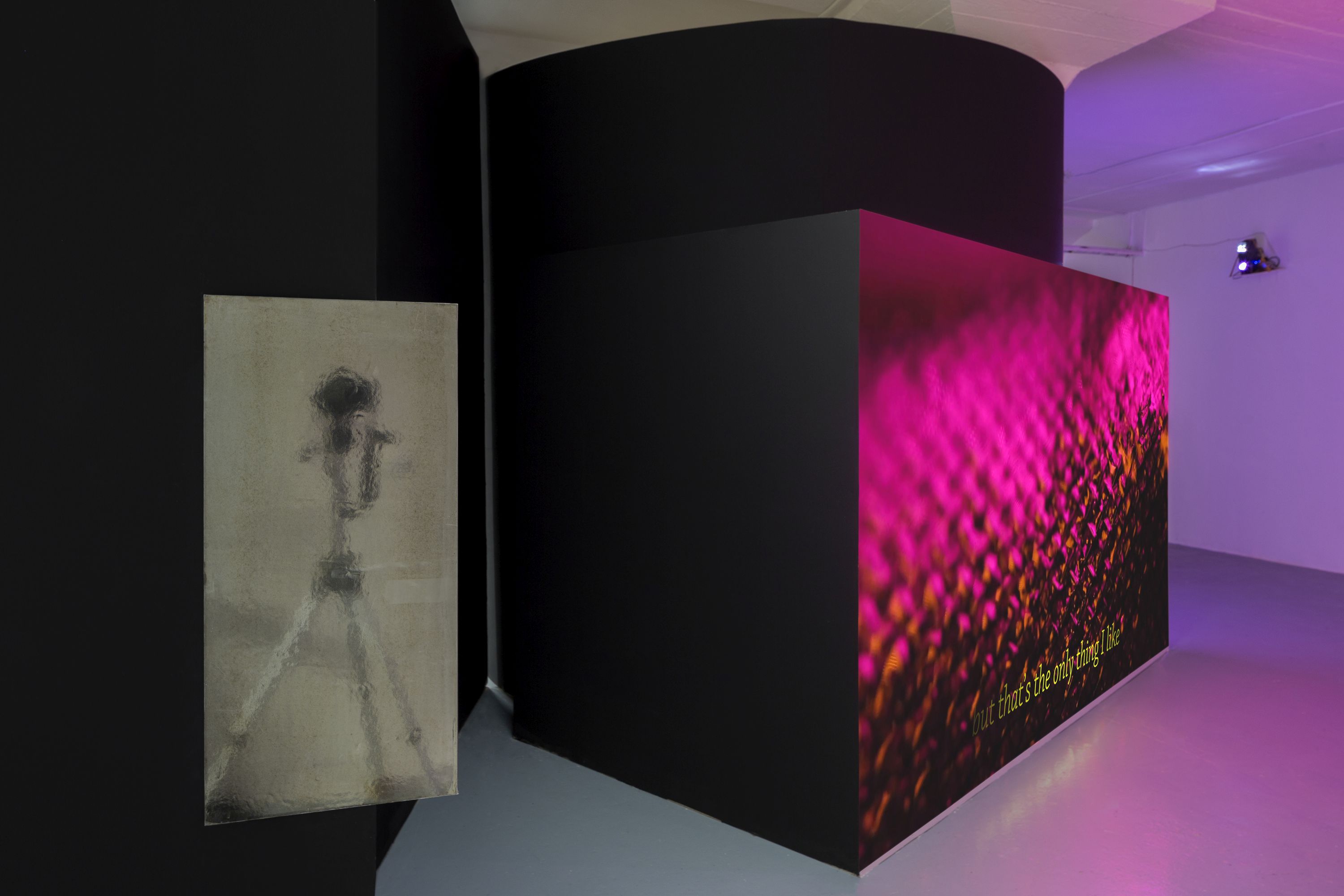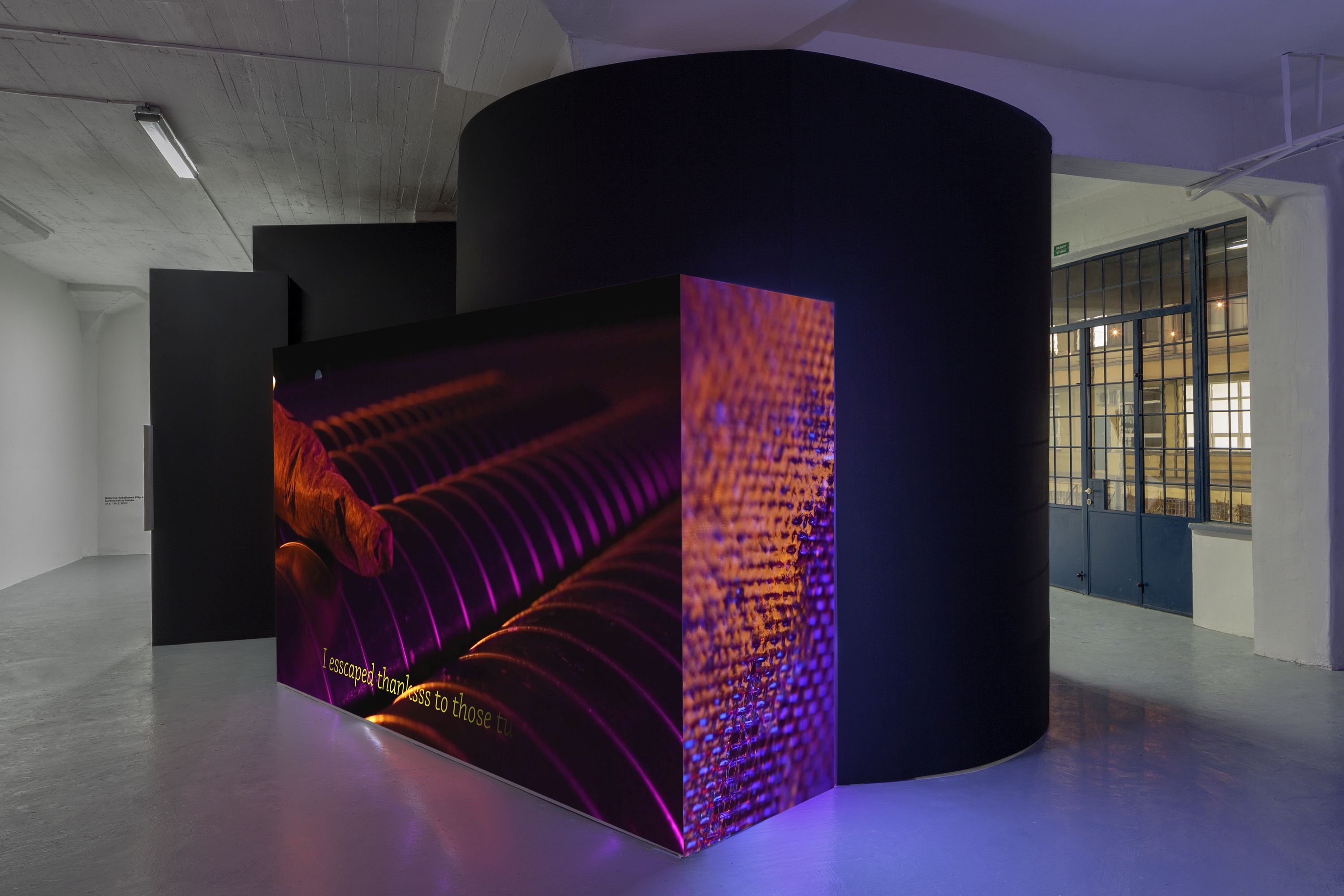Artists: Katarina Hudačicová, Filip Kopecký, Matěj Kos
Title: What is ours
Venue: Pragovka Gallery Entry
Curator: Michal Jalůvka
Photo: Katarína Hudačicová
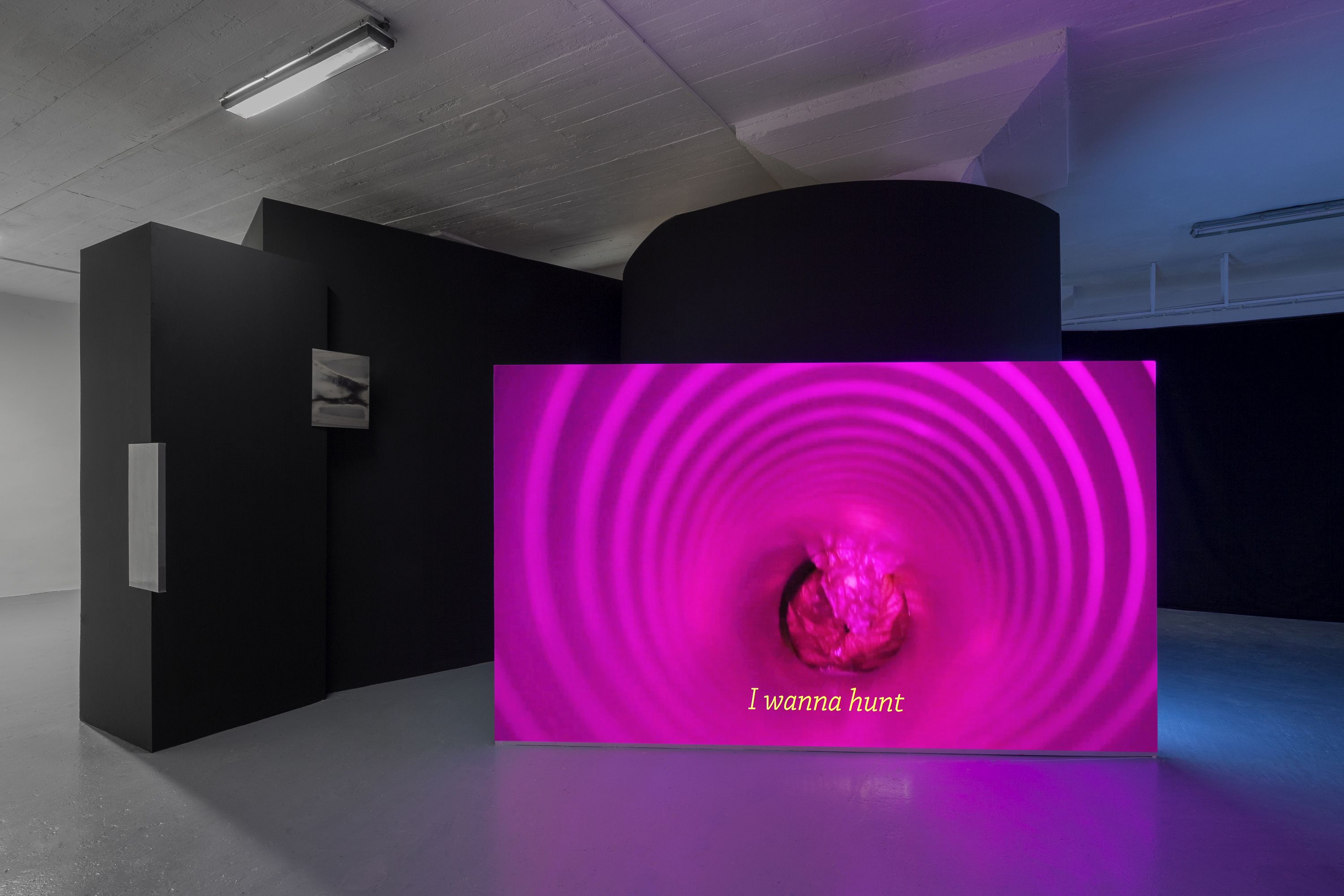
“Everything to the right and to the left will henceforth belong to us!” exclaims the Spanish conquistador Aguirre in Werner Herzog’s film, as he drifts down the Amazon river. Like him, we can feel the strange ownership bond to the different clusters of molecules that surround our physical body. Ironically, his draft was slowly approaching a tributary, whose shores were filled with indigenous people that were about to end his life. As the movie show, the feeling that something belongs to us is always entirely subjective and based on a number of relative, speculative, and socially conditioned factors that may change at any time. But what if, we turn our attention to what is inseparably linked to our consciousness?
Once a thought is born in our mind, it begins to live its own life. It grows, develops and changes independently of our wishes about its future directions. We are often unable to grasp the thought completely and hold it in its entirety. Some thoughts come to our mind over and over again, even when we try to get rid off them. Other thoughts seem to slip right through our fingers whenever we try to reach for them. One might ask, do they even belong to us?The monumental objects of Matěj Kos stand as a metaphor for our thought processes. The objects symbolize the ideas that are formed in our mind. We can change their shape, location or magnitude; but in-between these objects lies an overarching silence, that we as spectators fail to comprehend. At the same time, they represent an open possibility, a platform for other expressions that correspond with their shapes and spatial dimensions. The same problem appears when it comes to our own physical form. We perceive it as fragmented and incomplete even through images and reflections that surround us on every corner. They fail to give us a full grasp of our being. On the other hand, our outlook is quite apparent to everyone around. Hence, we are the only ones excluded from perceiving our full image.
Katarína Hudačinová’s photos represent the way we see ourselves – deformed, dynamic and incomplete. Due to their purely analogous origin, the attention is also pointed towards the language of the medium itself, its mutation and its potential to create an intimate contact space between the camera and the viewer. Video of Filip Kopecký tells a story about a snake who managed to escape from a terrarium into the tubing system of a prefab house. The fact that the domesticated snake is detached from his natural habitat leaves him in a very absurd situation from which he is desperately trying to escape. However, the dark and tiny spaces of the pipeline are not entirely sufficient solution. The snake speaks to us in a captivating human voice which humanizes the animal, however, it recalls the possessive relationship we have towards animals. On the other hand, hypnotic visual and plastic structures of skin and scales can make us feel more serpentine. This creates a hybrid entity without its own identity, which – although it would like to – does not belong anywhere.
If we agree with Graham Harman’s thesis that all objects in the universe are defined only by their own, autonomous existence – that they are and will be completely independent to us and are not just representations but autonomous substances – we can go further and apply this statement to concepts like thoughts or self-image, which are a part of the very core of ourselves and what we call personality. At the same time, it may be an incentive to revise the perceived sense of possession towards other, non-human beings.
